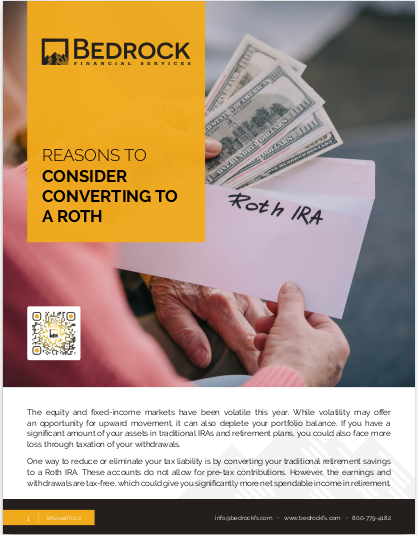Key Takeaways
-
Automating your lead generation in 2025 is not just about scaling faster—it’s about doing so without making your prospects feel like numbers on a spreadsheet.
-
To maintain the human element, you must integrate intentional, timely interactions throughout your lead funnel using both automated and personal touches.
Why Automation Alone Isn’t the Goal
It’s tempting to think automation is the golden key to growth. With so many tools now available, it seems you can set up a funnel, flip a switch, and watch leads roll in. But when you’re in financial services, your business isn’t built on clicks. It’s built on trust.
Automating every step without adding context, empathy, or human presence risks turning warm leads into cold ones. Even worse, it makes your brand indistinguishable from the dozens of others flooding inboxes and LinkedIn feeds daily.
What clients want in 2025 hasn’t changed much: clarity, consistency, and connection. Automation should deliver those at scale—not replace them.
Where Automation Makes the Most Sense
Used correctly, automation can eliminate friction, reduce lag time, and help you respond before a lead forgets they ever filled out your form.
1. Initial Response
-
Automated welcome emails or text replies work well within the first 10 minutes after a lead engages.
-
These messages should confirm what they signed up for, offer an immediate next step, and set expectations.
2. Scheduling and Reminders
-
Appointment-setting workflows can automate calendar links, confirmations, and pre-call reminders.
-
This saves time for both parties and improves show rates.
3. Lead Nurturing Campaigns
-
A pre-written email or SMS sequence can deliver short, value-packed insights spaced out over a few days or weeks.
-
The goal is to move leads from awareness to consideration while you stay top-of-mind.
Where You Still Need to Be Present
The danger of over-automating is that it removes your fingerprints from your own business. The most important parts of the client journey still require you to show up.
1. Discovery and Qualification
-
No algorithm understands nuance like you do.
-
Qualifying a lead with empathy helps you assess not just their financial situation, but their communication preferences and emotional readiness.
2. Proposal or Recommendation
-
Whether you’re discussing retirement planning, life insurance, or business succession, your client needs to feel heard.
-
Deliver recommendations in person or on video, not by autoresponder.
3. Check-Ins and Reviews
-
After someone becomes a client, your job isn’t over.
-
Schedule quarterly or annual reviews to offer proactive value, not just reactive support.
How to Build a Hybrid Funnel in 2025
Clients in 2025 expect two things: speed and sincerity. You can offer both by combining automation with well-timed human engagement.
Map the Funnel with Clear Roles
Segment your lead journey into three phases:
-
Top of Funnel (TOFU): Where you attract attention. Use social media ads, SEO content, or webinars to generate interest.
-
Middle of Funnel (MOFU): Where you nurture and educate. Automated emails or SMS campaigns can build trust.
-
Bottom of Funnel (BOFU): Where human interaction takes over. Use personalized outreach to schedule calls and present solutions.
Use Triggers to Time Your Outreach
Instead of emailing everyone on a schedule, use behavioral triggers:
-
When someone clicks a pricing page, follow up with a personal message.
-
If they attend a webinar, schedule a check-in within 48 hours.
-
If they don’t respond after three messages, try switching channels or tone.
Build Human Touchpoints Into Every Stage
Even in automated messages, you can include:
-
First name personalization.
-
Video snippets from you or your team.
-
Stories about why you care about a specific topic.
-
Quick reply options that let clients reach you directly when needed.
Avoiding the Most Common Automation Mistakes
Automation fails not because the tech is bad—but because the strategy lacks intent. Here’s what to watch for:
1. Too Much Too Soon
If a prospect downloads one lead magnet and immediately receives 12 emails in 4 days, it’s overwhelming. Spread out your communications. Let them breathe.
2. Robotic Language
Automated doesn’t mean sterile. Avoid jargon. Write how you speak in real conversations. Your tone can be professional without sounding prewritten.
3. Ignoring Replies
One of the most damaging mistakes: treating a response to your email as something for the system to filter. Every reply is an opportunity. Monitor your inbox or route replies to your CRM with alerts.
4. Failing to Segment
Not every lead wants the same thing. Separate:
-
Retirees vs. entrepreneurs
-
Medicare vs. long-term care prospects
-
One-time consultations vs. ongoing advisory
Tailor your messaging to each segment, not your entire list.
What Clients Notice (Even If You Don’t Realize It)
Clients are sharper than most automation funnels give them credit for. Here are details they pick up on:
Timing
-
Was your email sent at 3:02 AM? They know it wasn’t from your desk.
-
Is your response 4 days late? They’ve likely moved on.
Consistency
-
Does your tone match from email to call?
-
Are your promises in marketing followed up with clear deliverables?
Effort
-
Did you address their actual concerns or just push a product?
-
Did you make it easy for them to reach you?
These small signals tell a client if you’re worth working with—or just running a volume game.
Metrics That Actually Matter in 2025
With so many dashboards and KPIs, it’s easy to chase vanity numbers. But lead generation success today depends on metrics that signal real connection.
Track these more closely than open rates:
-
Reply Rate: Are leads engaging with your emails or ignoring them?
-
Call Book Rate: How many of your warm leads schedule actual meetings?
-
Conversion Timeline: From first contact to client—how long does it take?
-
Churn Risk Indicators: Who’s gone silent after engagement?
-
Referral Rate: Are your clients happy enough to introduce you to others?
Automation helps you gather this data. But your job is to act on it.
Designing an Authentic First Impression
The beginning of your funnel doesn’t just set up the next step—it defines the relationship. If your first touchpoint feels like a cold, transactional drip, don’t expect clients to stick around.
Make your first impression count by:
-
Embedding a short video from you in the welcome email.
-
Linking to a one-minute explainer about your process.
-
Offering them an easy way to reply, ask questions, or request a callback.
-
Avoiding upsells or pressure tactics too early.
In a crowded market, how you begin the conversation matters as much as what you eventually offer.
Lead Gen That Clients Feel Good About
When you automate with care, clients notice. They feel informed, not sold to. They sense intention, not just efficiency.
In 2025, it’s not about more automation. It’s about better automation. And better means more human.
That’s where we come in. At Bedrock Financial Services, we help professionals like you create client-friendly funnels that combine smart automation with sincere engagement. From lead generation to ongoing relationship building, our platform is built to grow your practice without losing what makes it personal.
Sign up today and see how we can help you create a lead experience your future clients will actually look forward to.







